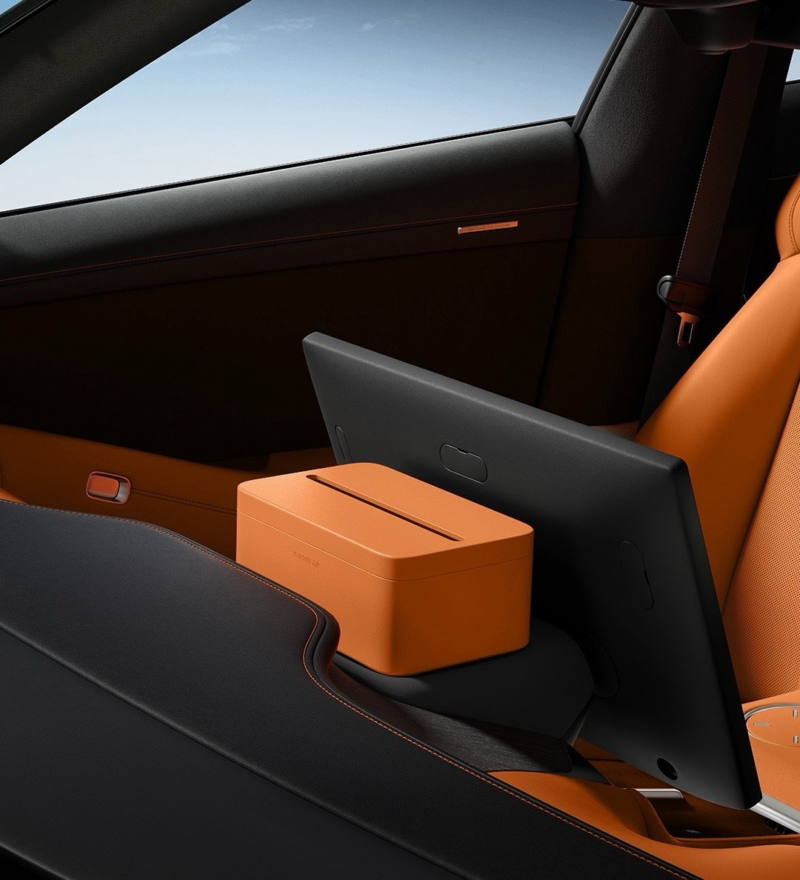Xiaomi YU7 sparks controversy over the use of consumer-grade chips
A heated debate surrounding the use of consumer-grade chips in vehicles has intensified, with Li Fenggang, Executive Deputy General Manager of FAW-Audi Sales Co., Ltd., releasing a video statement emphasising the critical differences between consumer and automotive-grade semiconductors. Li firmly stated that “cars are not fast-moving consumer goods” and that Audi “will never practice on users.”
Li’s remarks come amidst growing discussion, particularly after the launch of the Xiaomi YU7, which reportedly utilises a consumer-grade Qualcomm Snapdragon 8 Gen 3 chip for its cockpit system. This has led to widespread public and industry scrutiny regarding the reliability and safety of such components in automotive applications.
Li Fenggang detailed the fundamental distinctions between the two chip types, addressing the notion held by some automakers that consumer chips offer superior computing power and sufficient safety. He clarified that automotive-grade chips must pass a rigorous series of international certifications, including AEC-Q, ISO 26262, and IATF 16949. In contrast, consumer-grade chips are found in everyday electronics like mobile phones, computers, and smart home devices.
Li highlighted three key areas of divergence:
- Operating Environment: Consumer electronics typically operate in stable indoor environments, whereas vehicles face extreme conditions such as high temperatures, freezing cold, rain, snow, dust, bumps, and vibrations. Automotive-grade chips are designed to function reliably from -40°F to 302°F (-40°C to 150°C), while consumer chips are rated for a much narrower range of 32°F to 158°F (0°C to 70°C). Automotive materials must also be resistant to high temperatures, corrosion, and condensation.
- Lifespan: Consumer electronics have a rapid refresh cycle, with chips typically designed for a 3-5 year lifespan. Cars, however, are expected to last 10-15 years or even longer. Automotive-grade chips require suppliers to guarantee a stable supply for over 10 years, with extremely high consistency across different production batches, necessitating multi-batch AEC-Q validation.
- Safety Margin: Unlike mobile phones, vehicles transport passengers at high speeds, and a component failure can have fatal consequences. Consumer-grade chips allow for a defect rate of up to 500 PPM (parts per million), meaning 500 failures per million units. Automotive-grade chips, conversely, typically demand a defect rate below 1 PPM (one in a million).
| Chip Grade | Operating Temperature Range | Certification Requirements | Typical Use Cases | Defect Rate (PPM) |
|---|---|---|---|---|
| Consumer Grade | 0°C to 70°C (32°F to 158°F) | None or minimal | Lower than the consumer | Up to 500 |
| Industrial Grade | Wider than consumer | AEC-Q100 (environmental & lifespan tests) | Industrial equipment | Lower than consumer |
| Automotive Grade | -40°C to 150°C (-40°F to 302°F) | AEC-Q, ISO 26262, IATF 16949 | Vehicle safety & control systems | Less than 1 |
| Military Grade | Very wide | Military standards | Defense electronics | Very low |
| Aerospace Grade | Very wide | Aerospace standards | Spacecraft | Extremely low |
The debate gained significant traction with the Xiaomi YU7, where the use of a consumer-grade Qualcomm 8 Gen 3 cockpit chip was juxtaposed with a “vehicle-grade” tissue box.

However, the Xiaomi YU7 is not the first vehicle to incorporate non-automotive-grade chips. Tesla, nearly a decade ago, began experimenting with such components, though it did face large-scale recalls due to chip overheating issues. The YU7’s strong sales have reignited the question: should consumers buy smart cars with cockpits controlled by consumer-grade chips?
Professor Zhu Xichan of Tongji University’s Automotive College explained that a car contains approximately 1,000 chips. For components critical to functional safety that could impact personal property or life, chips must undergo AEC-Q100 and ISO 26262 functional safety certifications, qualifying them as “automotive-grade.” However, for non-safety-critical components, only AEC-Q100 environmental resistance and lifespan tests are required.
A prevailing theory suggests that a Snapdragon 8 Gen 3 mobile processor, released in late October 2023, would typically require at least a year for automotive-grade certification. Therefore, its rapid integration into vehicles this year implies direct use without full automotive-grade SoC certification.
Indeed, some automakers have already adopted more advanced and cost-effective consumer-grade chip solutions for non-safety-critical modules.
Comparison of mainstream automotive cockpit chip configurations
| Automaker/Model | Cockpit Chip Model | Chip Type | Key Features |
|---|---|---|---|
| Xiaomi YU7 | Qualcomm Snapdragon 8 Gen 3 | Consumer | Full cockpit control (instrumentation + entertainment) |
| Tesla Model 3/Y | AMD Ryzen V1000 | Consumer | Central infotainment system |
| Voyah FREE+ | Huawei MDC Series | Automotive | HarmonyOS cockpit + ADAS information interaction |
| Li Auto L8 | Qualcomm 8155P | Automotive | Dual-screen system |
| Xpeng G9 | Qualcomm 8250 | Automotive | Xmart OS 5.0 |
| Nio ET5 | Nvidia Orin X | Automotive | Intelligent driving + cockpit integration |
| BYD Seal | Qualcomm 8155 (Central Control) | Automotive | Instrument panel + basic control |
| MediaTek MT8666 (Entertainment) | Consumer | Video playback/App store | |
| Volkswagen ID.7 | Samsung Exynos Auto V9 | Automotive | Central infotainment display |
| Toyota bZ4X | Renesas R-Car H3 | Automotive | Full-function cockpit |
| Tesla Model S (2016) | Nvidia Tegra 3 | Consumer | Central control + rear-view camera |
Zhu Xichan clarified that chips not requiring functional safety certification cannot be strictly called “automotive-grade.” However, he cautioned against equating them entirely with “consumer electronic-grade chips.” Non-automotive-grade chips used in cars must still pass AEC-Q100 tests, as consumer electronics have inferior environmental temperature ranges and lifespans compared to automotive requirements.
While Xiaomi has not explicitly stated whether the Snapdragon 8 Gen 3 chip itself passed AEC-Q100, they have announced that the YU7’s cockpit core board passed AEC-Q104 vehicle-grade testing. AEC-Q104 is a system-level validation standard for Multi-Chip Modules (MCMs), focusing on thermal coupling, electrical stress interaction, structural reliability, and long-term service stability of multiple chips within a package. This suggests Xiaomi employed a method to achieve overall vehicle-grade certification for the integrated solution.



